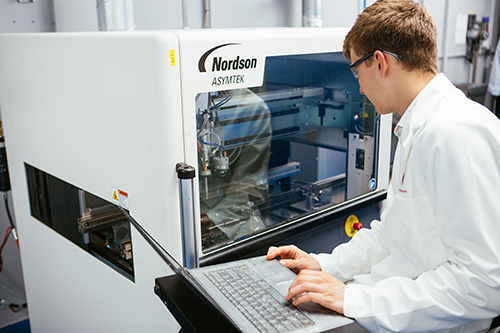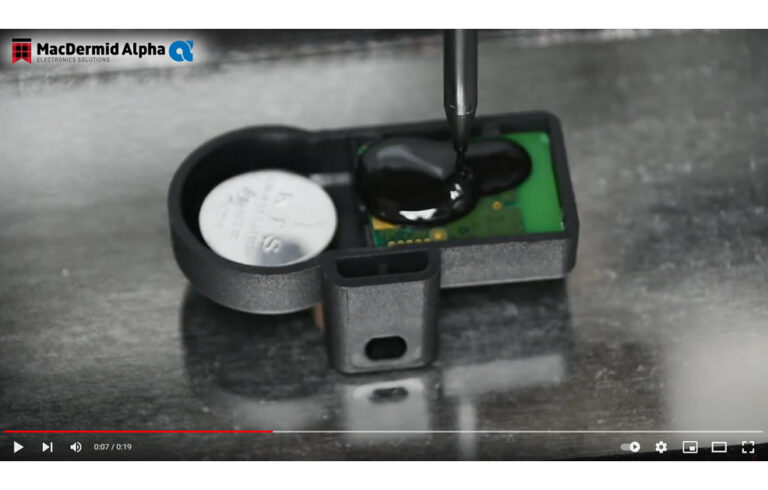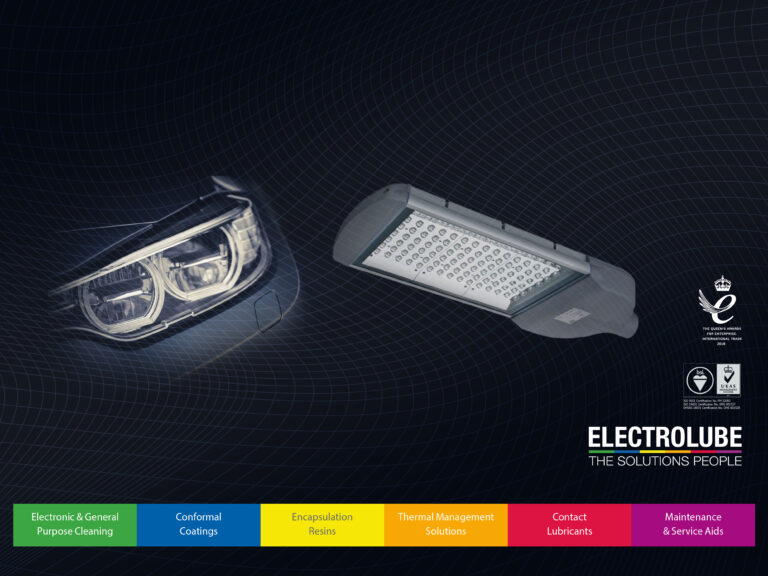At a time when we should all be considering the impact that some conformal coating formulations can have on the environment and start looking for more environmentally friendly options, let me pose this question: how effective can water-based conformal coatings really be?
In my blog series, I have looked at how to minimise and limit incidences that may hinder the performance of conformal coatings. Essentially, I offered advice on the most appropriate product selection, application technique and the key decisions on a range of issues, such as how thick the coating should be.
However, one area I haven’t covered is how the various chemistries that underpin these high-performing products actually affect the environment – either during application (when they may potentially pose a hazard to workers) or in the context of their role as protection for electronic assemblies that are put to use in the wider world. In this article, I intend to concentrate fully on environmental factors, describing the environmentally friendly products that are in operation and upcoming, and their limitations.
With environmental awareness at an all-time high, companies are looking for ‘greener’ options in terms of the chemical products they use for the manufacture and protection of electronics, including conformal coatings and various cleaning technologies, among others. Such products often contain solvents, which are described as ‘Volatile Organic Compounds’ (VOCs), carbon containing substances that vaporise easily at room temperature.
From a raw materials perspective, and concentrating on chemicals used within the electronics sector, there is now a greater choice of more environmentally friendly alternatives available for design engineers to consider; in recent years, such alternatives have progressed considerably in terms of their performance as protectors of electronic circuits while complying with increasingly onerous environmental constraints and internationally recognised standards.
Water-based coatings are a case in point. For instance, all of us have now become used to using water-based paint products that have very little odour when applied and thankfully make brush cleaning much easier and less messy. Indeed, water-based paints now dominate the market for internal decorative applications. We also have had water-based conformal coatings for more than a decade, but in an electronics context, and particularly where they are used as a corrosion prevention medium, they have two major limitations.
OK, this first is an obvious one – they contain water; water is electrically conductive and water-based coatings can remain sufficiently conductive for many, many months after application, creating signal integrity or cross-talk issues on sensitive board designs. Secondly, in order to prepare the emulsions or dispersions, some form of compatibility with water is necessary, being either a modification of the polymer (dispersion) or surfactant (emulsion). The problem with either approach is that both types remain somewhat sensitive to water throughout their lifetimes, thus limiting the protection they can afford in high humidity environments.
Overall, the performance of current water-based materials is not comparable with that of solvent-based resins and is very far from the performance of solvent-less materials. However, with the current levels of R&D activity being conducted into the development of viable water-based systems, I am confident that these limitations will eventually be overcome.
Solvent-free – the key benefits
Solvent-free materials are generally lower odour, lower hazard materials and are therefore much safer for users to apply at the manufacturing stage. They are usually non-flammable and consequently pose a lower insurance risk both at the production stage as well as in use. Significantly they help minimise levels of VOC emissions, ensuring compliance with environmental standards. Where 2K (two-part) conformal coatings are concerned, it is possible to apply thicker coatings and achieve better protection without compromising other performance requirements such as tolerance of thermal shock
Clearly, some coatings must be able to perform in exceptionally harsh environments, so what might be a typical combination of elements that represents the harshest environment that a coating must protect against? Let’s take corrosion as an example; in order for a metal surface to corrode, a potential difference, an electrolyte and ionic impurities must all be present. If a coating is well applied, it will prevent corrosion by inhibiting external ionic species and liquids such as water from reaching the metal surface.
Any environment that can cause degradation of the coating and provide the required conditions for corrosion to occur can potentially be tough on the coating. For example, an environment in which there is cycling between high and low temperatures places the coating under a lot of stress, while an abnormally high temperature can speed up polymer degradation; both of these conditions can combine to cause cracking of the coating, exposing parts of the circuit to impurities which will ultimately lead to circuit failure. The cyclical nature of the thermal environment will create differences between the board and its local ambient conditions, leading to the formation of damaging condensation. Should the assembly also be exposed to salt-spray then the likelihood of failure will increase significantly
Test, Test and Test Again
Environmental testing methods are the key to ensuring that coatings are fit for purpose and will stand up to the most rigorous of conditions. But what exactly is environmental testing? In its basic form, environmental testing is conducted on a material to ascertain its performance characteristics under controlled environmental conditions as close as possible to those in which the product may reasonably be expected to perform.
Examples include, but are not limited to: extremely high and low temperatures; rapid excursions of temperature sufficient to impose thermal shock; salt spray and salt fog; very high humidity or condensing conditions; saturated environments; exposure to fungal growths, corrosive gases and solar radiation, and high and low atmospheric pressures (especially for aeronautical and space equipment).
In addition to understanding how well the material tolerates each individual condition, these specific tests form the basis for sequential testing by a combination of methods to evaluate the cumulative effects of harsh environments. In reality, a coated board will be subjected to a variety of environmental impacts, not just one. The conditions and exposures should be chosen to be representative of what could reasonably be expected in a real life, end-use environment.
So, there you have it; environmentally friendly materials are available now and new developments are coming on stream. As their performance gradually improves, with time these materials will open up new avenues for compliance across many disciplines. A cautionary note for the present, however: test your water-based conformal coating thoroughly and ensure that it meets your immediate needs while delivering a guaranteed level of protection.











